
Does kung fu has its origin in india
In Chinese, martial arts are called as “Wushu”, meaning “War art”. Kung fu is formed by combining the two words, “kung” meaning “merit” or “achievement” and “Fu” meaning man. Hence, “Kung fu” literally translates to “human accomplishment” Or “skilled man”. Karate is derived form of kung fu that is mostly focused on linear movements compared to circular movements of kung fu. Karate teaches to disable or disarm the opponent without physically wounding him/her.You may have heard many more such things on karate or kung fu from your martial arts teacher but none of them may have given you any knowledge on the origins of kung fu, karate or other similar martial arts. So in this article, we will go through the Indian origin of kung fu, chuan fu, karate and other such martial arts (Also read kalaripayattu- World oldest martial art from india)
Is Kung fu derived from Kalarippayattu
Recent research suggests Kung fu as the Chinese version of Indian martial arts, primarily ‘Kalarippayattu’. With the spread of Buddhism, martial arts of Kalarippayattu landed in china that later got the Chinese name ‘Kung fu’ which undoubtedly went on to become the best martial art form in the world.
Short note on buddhism
The most tolerant of all religions, Buddhism, was founded by followers of Lord Buddha in India. Buddhism then spread to rest of the world especially south Asian & eastern countries like Japan, china, Korea, Thailand, Myanmar, Cambodia, Indonesia etc. Commenting on the spread of Buddhism in china, Chinese ambassador to USA, ‘Hu Shih’, once said “India conquered and dominated China culturally for 20 centuries without ever having to send a single soldier across her border”
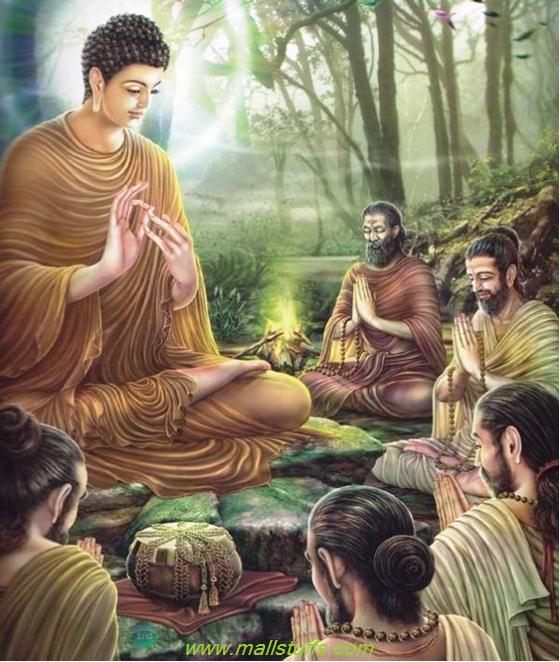
Lord Buddha and his followers
BodhiDharma brought Kung fu to china
Kung fu was brought to china by a wandering Indian sage called ‘Bodhi Dharma’, the descendant of Pallava dynasty and son of Pallava king “Kantha Varman”. Founder of Zen Buddhism and a Kalarippayattu expert, Bodhi Dharma is known as Chan or ‘Po-ti-tama’ or ‘Dhammo’ in china and Dharumma in Japan. In 522 AD, to spread the message of Buddhism, He travelled from Kancheepuram district of Tamilnadu in southern India to the court of Chinese king ‘Liang Nuti’.
Why there was a need of kung fu in china
In those times, kingdom of ‘Liang Nuti’ was frequently plundered by local goons, dacoits and bandits. King ‘Liang Nuti’ requested ‘Bodhi Dharma’ to teach Indian martial arts to his soldiers to defend against the rising attacks by local dacoits (All Indian monks necessarily practiced martial arts to protect themselves from the rising dangers of forest dacoits, bandits and fanatics of other religions as they travelled and visited several kingdoms across the length and breadth of the country)
Bodhi dharma history-part 1
<>
Bodhi dharma history-part 2
<>
Bodhi dharma history-part 3
<>
Bodhi dharma history-part 4
<>
Bodhi dharma history-part 5
<>
Bodhi dharma history-part 6
<>
Bodhi dharma history-part 7
How Bodhi dharma got accepted by Chinese monks
Bodhidharma accepted his request but he faced resistance from the local monks who were against the idea of trusting a foreign warrior. To gain their trust, he meditated continuously in lotus posture for nine years near the entrance of their kingdom.
place where Bodhi dharma meditated,
After weeks of meditation when he opened his eyes, a hole was bore onto the wall by the gaze of his sight. Seeing this, king and monks accepted his divinity and permitted him to teach martial arts at the Shaolin monastery.
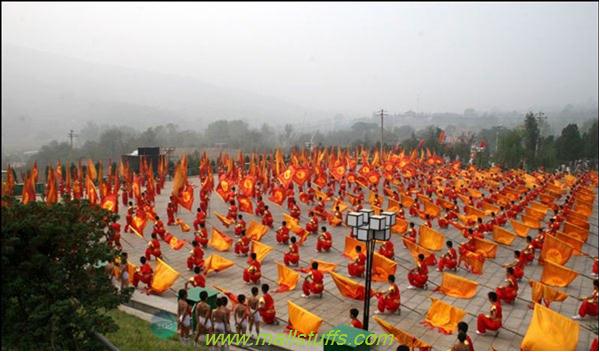
Kung fu at beautiful shoalin monastery
Bodhi dharma also taught meditation to Chinese monks
Bodhidharma taught Kalarippayattu, Silambam and other martial arts based on animal movements of tiger, snake, crane leopard and dragon to Chinese soldiers and monks. However he noticed that the body of Chinese monks are too weak and nor perfect for practice of any martial arts. So, he first taught them yoga, pranayam(Way of breathing) and meditation before starting with kalaripayattu and other martial arts. Monks of Shaolin religiously practiced meditation and martial arts to improve the state of their body and mind. Importance of hand-to-hand martial arts was embraced by pacifist’s monks as they countered the rising cruelty and treachery of dacoits.
BATUVA helped Bodhi dharma in preaching meditation
Shaolin temple was constructed by emperor ‘Liang Nuti’ as the residence of Indian sage ‘BATUVA’ who translated ancient Sanskrit books to Chinese. He also taught of control over the mind and body ("prana" or acupuncture) through meditation and sound execution of such martial arts. Furthermore, he also taught the use of natural ayurvedic medicines that can be used in case of any injury.
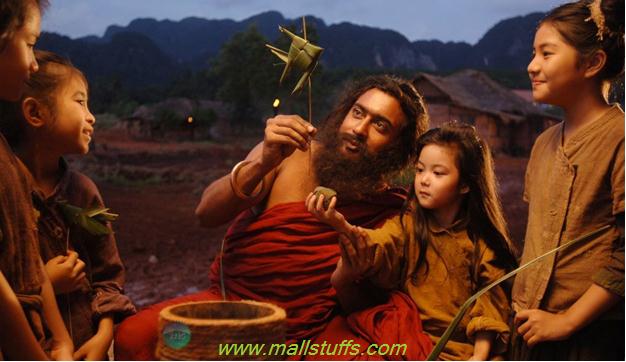
Bodhi dharma playing with Chinese kids while teaching the art of ayurveda
How Kung fu became famous all over china and Japan
Even the common Chinese man accepted his gospel of Buddhism, meditation and non-violence. Over the course of time, such fighting monks became famous all over china. These martial arts later spread to Japan where the martial arts warriors are known as ‘samurai warriors’. Kung fu is just a small less-violent part of Kalariypayattu in which the use of lethal weapons like daggers, knives and swords are not allowed. Kung fu later split up to many other arts forms like Judo, Karate, chaun fu etc. According to Chinese records, Bodhidharma lived for 150 years and widely preached the message of Buddhism across china.
<>
Documentary on origin of Kung fu in china
Evidences of Kung fu coming from India
Many evidences were lost after the destruction and burning of ancient Indian temples and universities by mughal and British rulers. Still, we have many evidences to support this claim
1) On the walls of Shaolin temple, there is a painting of a dark skinned Indian looking monk teaching the bare-handed martial arts to fair skinned Chinese soldiers. Beneath the painting is written ‘Tenjiku Naranokaku’, meaning “Fighting techniques of India to train the body”. Shaolin monastery is open to visitors after the handover by present communist government to inheritors of bodhidharma disciples.
2) Of four buildings in Shaolin monastery, one building is dedicated to bodhidharma where his disciples do only two tasks: Kung fu and meditation.
3) According to historical records of “Dao Xuan”, Bodhidharma was the son of third King “Kantha Varman”.
4) Historical records of pallava dynasty have the account of bodhidharma visit to china and his permanent stay in china.
5) Unlike western martial arts like boxing and fencing, Martial arts with meditation were practiced only in India. Since most of the Chinese martial arts including karate, judo and kung fu are deeply interwoven with meditation, it is perhaps the vital evidence that kung fu came from India.
6) None of the country was as advanced as India in martial arts. In nalanda university (Asia second oldest university after takshila), there was 64 courses on martial arts which was attended by students from all over the world as this was the only place where such courses were taught.
7) Even the traditions of kalaripayattu are very similar to kung fu. Like kalaripayattu, Kung fu also demands deep respect for teachers. Before the start of the lesson, student has to bow to the teacher, quite similar to Guru-shishya feet-touching tradition of India
8) One of the effective techniques inherited from kung fu from Kalari is the use of stick. Stick is the favorite weapon of all wandering monks as they always carried a long cane in their adventurous journey
9) As we all know, Buddhist monk are very mild, gentle and good natured. No lethal weapons are used in Kung fu, thereby depicting the less violent form of fighting for self-protection and defense. Non-violence is a concept unique to Hinduism and Buddhism, thus giving the indication that kung fu came from the Buddhist monk.
10) Chinese vesting admiral of Ming dynasty, ‘Zheng He’ had written extensively on the fighting skills of Kalari warriors after each of his seven trips to Calicut between 1406 and 1433.
11) Marma Adi (Sanskrit) or Varma Kalai (Tamil) is the science of 108 vital points in the body, when attacked can kill the opponent or make the opponent unconscious. All these vital points are described briefly in ancient Indian historical records but there are no historical records of any such vital points in any of the other martial arts around the world including kung fu, though all of them use such techniques of attacking vital pressure points of the body.

108 vital points of the body
Ethical Indian code of conduct imported by china and Japan
Fighting techniques without the use of weapons was one of the several qualities of Indian kshatriya race that was exported to china and Japan. According to kshatriya ethical code of conduct, kshatriya would never attack his opponent with any weapons if the opponent is unseated from his horse/chariot or is devoid of any weapon. In such cases, Martial arts or techniques of hand-to hand combat was very handy as they have to fight without the use of any weapon. Several techniques and tactics formulated by different kshatriya in their hand-to hand fight were later taught to successive generations.
Chinese and Japanese kshatriyas
Kshatriyas were like peace-keeping elite commanders whose sole purpose was to maintain peace and order in their kingdom. Term used for such noble military commanders in Japan was ‘Senani’ or ‘Sensei’. China Kshatriyas are believed to be the descendants of deity Ping Wang, meaning “Deity of calmness and compassion”. Similarly, Japanese Kshatriyas are the descendants of deity ‘Byo O’. Samurai is one of the kshatriya race of Japan that has preserved its ancient battle practices and techniques inherited from India via china.
Evidences of Chaun Fu coming from India
Chuan Fu is the Chinese synonym for "Vajramukti", a peaceful Indian unarmed combat form based on ritualized body movements for the preservation of healthy body, self-defense (without weapon) and meditative control. Term Chuan Fa was used by Tang dynasty to represent techniques of Vajramukti brought from India. In Taiwan, title was changed from Chuan Fa to "Kempo".
In addition to Indian and Chinese records, there is a mention of ‘Chuan Fu’ in "Kempo Hishu", Ryukyuan and other Japanese scriptures, as the martial art form influenced from ‘Vajramukti’ martial arts of India that was brought into china via the Tibetan monastery. Further, Vajramukti is recorded as the hand to hand martial combat between two deities phonetically named as "Kashima" and "Kachuri" in the Japanese manuscript “Ta-ka-no-kabi” of jujitsu schools. “Ta-ka-no-kabi” or Chinese “Kao Cha Li” literally translates to “giver and receiver of higher realm”. This sounds very close to Sanskrit term “Devaloka dana adana”, meaning “Realm of gods who gives and receives”. Chinese term Kashimi and Kachuri is supposed to be the transliterations of Buddhist Sanskrit term "Ksatre(ya) ksetra", meaning "Land of Kshatriyas". "Land of Kshatriyas" refers to land of India, a nation where the warriors learn and exercise control over their body. Vajramukti was a peaceful training exercise of attack and self defense technically referred as “Nata” in Sanskrit. Nata evolved from generations to generations thus giving birth to many Chinese meditational martial art forms like kung fu and chuan fu.
Nata was the martial art technique and not a dance form
Many modern historians describe ‘nata’ as ancient Indian dance form but according to Mahayana Buddhism, ‘nata’ is the classical martial art form aimed at nourishing the body through animal movements and meditation. Term Nata actually means “Movement or techniques that nourish the body”. Buddhist text with an Indian origin known as "The Sutra of Loto" or “HOKKE-KYO” in Japanese, describes of a fighting technique practiced by kshatriyas called “Nata” that encompasses all the techniques of Karate and chuan fa
Deity Nataraja(Lord Shiva) is the protector and guardian of Buddhism
Deity Nataraja(form of lord Shiva) is considered as one of the four protectors of Buddhism. In Chinese known as ‘Na Lo Yen Tien’, Deity Nataraja is said to be the guardian of eastern hemisphere of Mandala. Chinese student offers their respect to Deity ‘Na Lo Yen Tien’ just like Indian kalari warriors offer their respect to goddess Kali (destructive form of lord Shiva).
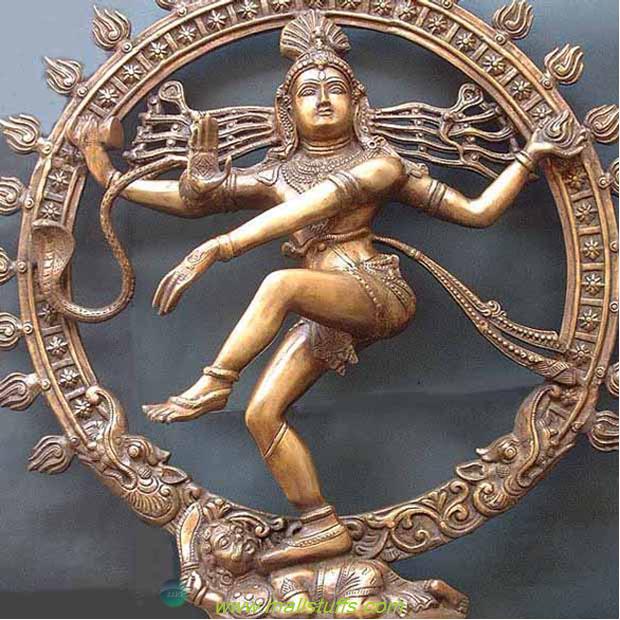
Deity nataraja, violent manifestation of lord Shiva
In India, Deity Nataraja is known as the lord of Nata (dance forms). Dance form of Nataraja was meant to awaken the inner wisdom through mental and physical concentration. According to Shifu Nagaboshi Tomio, trained martial arts specialist and author of “The Bodhisattva Warriors: The Origin, Inner Philosophy, History and Symbolism of the Buddhist Martial Art within India and China”, "nata" is the ancient Indian martial art practiced by Vedic Kshatriyas. Even the well-known historian arun gupta confirms ‘Nata’ as Vedic martial arts.
Was Kung fu the first martial art of china?
Martial arts were practiced by all countries but none of them were so advanced and perfect like Kalariyapayattu. Before the advent of kung fu, Chinese had the fighting system though not effective and useful as kung fu. It would be very unwise to say that china was devoid of any fighting system before kung fu. More on china martial arts before kung fu can be read in Chinese books on martial arts.
Destruction of martial arts
After the cruel invasion and brutal destruction of holy sites and scriptures by barbaric Islamic invaders, Indian martial arts subsided after the killing of Nata and Kalari teachers. kalaripayattu was limited to only few regions of India where the Islamic emperors failed to established their rule. Knowing that they cannot defeat kalari warriors in an ethical fight, Islamic soldiers treacherously killed all kalari warriors either by poisoning or attacking unarmed kalari warriors with lethal weapons. Many Buddhist monks and Indian sages fled to southern India or neighboring countries like china and sri lanka to escape the brutal killing of Islamic fanatics. Despite of killing of kalari warriors/teachers and permanent ban on kalari by British Empire plus the present communist rule in kerala, Somehow this ancient art is still preserved in southern regions of India especially Kerala and Tamil nadu.
<>
Full documentary on kalaripayattu
How Jackie chan became the fan of Indian martial arts
In 2007, When Jackie Chan was busy shooting his film “The myth”, he got attracted to few scenes of the CD sent by Department of Kerala tourism with an invitation of honoring him as the brand ambassador of Kerala tourism. Chan declined their invitation but inquired about the martial art performer in the scenes he saw in the CD. Jackie chan was so impressed that he invited that martial art performer “G Sathyanarayanan” to be a part of his film. Sathyanarayanan immediately flew to shanghai and then has never looked back.
<>
kalaripayattu moves in Jackie Chan movie ‘the myth”
Indian martial arts is coming back again
Sathyanarayanan is now flooded with offers from Hollywood directors. "It is a great chance for me to work in Hollywood and present our traditional Kalaripayattu. I am taking this rich cultural art to Hollywood," said Sathyanarayanan. Sathyanarayanan is the eldest son of Govindankutty Nair Gurukkal, founder of Kalaraipayattu School “C V N Kalari”. C V N Kalari got famous in Asia and Europe when it was included in Indian cultural exchange programmes.
On the worldwide success of C V N Kalari, Sathyanarayanan said "It is a great feeling that Kalaripayattu is becoming a well-known martial art across the world. Now, foreign films are coming to endorse our great fighting skills"
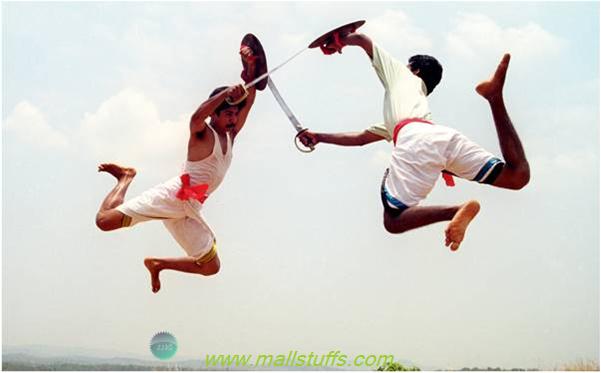
Best of kalaripyattu
Conclusion
Detailed analysis and comparison of kung fu with kalaripayattu reveals that Kung fu is not an exact copy of ancient Indian martial arts but a derivation of Vedic martial arts that went through many evolutionary changes to take a Chinese form that we see today. Kung fu has finely added movements or manners like shouting, footwork, stances of many more animals like dragon, viper snake etc which were originally absent in Vedic martial arts. While the techniques of kalaripayattu remains the same, Techniques in kung fu has gone through many refinements which has made it the most advanced scientific martial art combat in the world.
Note: Images used on this website
are either a production of Bhaktivedanta Book Trust(https://www.krishna.com), Iskcon
Foundation or were found in google search under "Free to use and share". If any
of the images presented here violates copyright issues or infringes anyone copyright
or are not under "Fair use", then please bring it to our notice. Read
Disclaimer for more.
Share this to your friends. One of your friend is
waiting for your share.
Related Articles
How chanting AUM controls blood pressure and heart diseases
Do plants sing or create music
Does kung fu has its origin in india
Hindu mantras for wealth and abundance
Symbolism of kumbh mela in sikhism
Aum-The sacred word of all religions
How hanuman flew at the speed of 660 km per hr
Why number 108 is holy and auspicious in Hinduism
How sages and mystics communicates with god
ekdanta vakratundaya english poetic translation with hindi subtitles
Post Comment